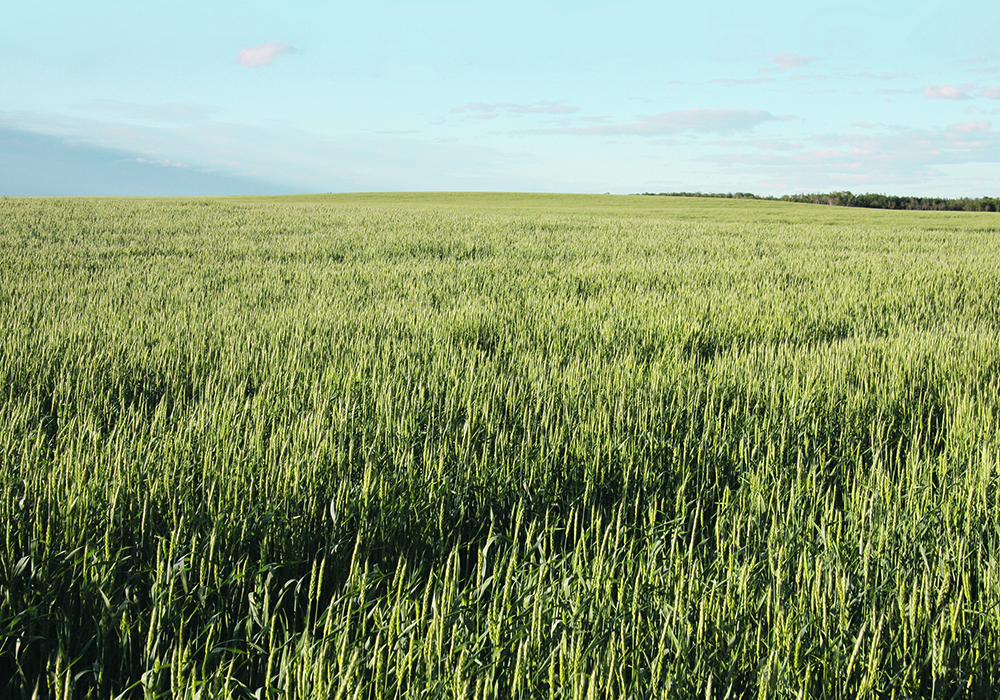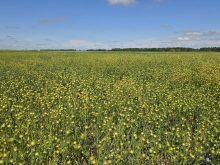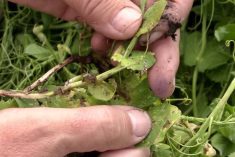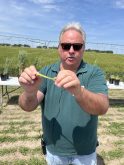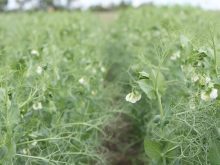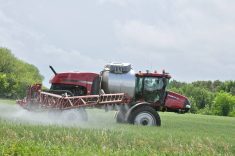Fungal diseases are a serious threat for farmers and their prevalence could be more devastating in light of climate change. But even as that advances, fungal diseases are already a serious threat to the global food supply.
Scientists at the University of Exeter, U.K., authored a commentary published recently in the journal Nature, highlighting the threats of fungal infection to crops. Growers worldwide lose between 10 and 23 percent of their crops to infection annually, despite widespread use of fungicides. Another 10 to 20 percent is lost to problems post-harvest.
Read Also

Fertilizer method’s link to emissions studied
A researcher says others studying greenhouse gas emissions aren’t considering how the loss of nitrogen into the atmosphere correlates with fertilizer application or if there is an impact to yield.
Growers in England and Ireland are seeing wheat stem rust infections, and fusarium head blight symptoms on U.K. wheat have increased substantially since 2000. Scientists now warn that fungal tolerance to higher temperatures could allow these opportunistic and adaptable soil-dwelling pathogens to expand their range of hosts and infect livestock or humans.
Scientists at the University of Exeter took their concerns to the people.
They wrote that global food security is expected to encounter unprecedented challenges as the population rises. Across the critical calorie crops of rice, wheat, corn, soybeans and potatoes, crop losses from infections equal enough food for 600 million to four billion people annually, representing 2,000 calories daily for one year. Fungal infections threaten moderate to severe food insecurity on a pandemic scale.
“What I wanted to do was raise public awareness and show that pandemics are not just only for humans and animals, but they are for plants too,” said professor Sarah Gurr, chair in food security at the Canadian Institute for Advanced Research and co-author of the commentary. “Plant pandemics will happen.”
They can erupt through fungi’s innate adaptability, resilience, longevity, genetic diversity and widespread travel between continents.
“As our global population is projected to soar, humanity is facing unprecedented challenges to food production,” said co-author and professor Eva Stukenbrock. “We’re already seeing massive crop losses to fungal infection, which could sustain millions of people each year.”
The trend could worsen as climate change makes fungal infections more prevalent and they continue to develop resistance to antifungals.
“There is more pressure to feed more people with fewer acreages,” said Richard Belanger, head of the plant science department and research chair in plant protection at Laval University.
“This added stress promotes fungal infections, which increases fungicide applications, which triggers resistance to fungicides, which expands the spectrum of fungal infections.”
Belanger said fungal infections are an inevitable consequence of monocultures, and all farmers need to take measures to curb them. However, infections vary from year to year, requiring more data collection to assess the impact.
“In principle, most fungi can develop resistance to systemic fungicides,” he said. “Infections usually don’t start with resistant fungi. They become resistant as a result of repeated applications (that) favour the development and expansion of resistant strains.”
Fungi are particularly threatening due to their extreme adaptability and genetic diversity.
“Some of the resistance spores can survive and overwinter for more than 40 years,” said Gurr. “But what we didn’t understand until we started gene sequencing these fungi is how toxic their genomes are. That means they can very neatly and very abruptly adopt anything they want.
“They can become temperature acclimated. As the temperature warms up, the fungus generates homologies that are temperature resilient. They are going to emerge with new disease abilities. They are going to become virulent and overcome the fungicides. If the fungicide is only targeting one fungal cellular process, it will become resistant.”
Gurr said she is concerned about the greater need for field research. Often, samples are collected from the field and grown in the lab using a particular plant in ideal growth conditions.
“We need to simulate disease in the field, which is why I started getting interested in mathematical models,” she said. “Fusarium head blight is a big problem in Canada. It’s not only climate change that is affecting its spread but it’s also changing what is called the disease complex.
“There are different fungi that cause it that are slightly changing. It not only causes problems in the field, but it causes massive problems with mycotoxins.”
Fusarium head blight, also known as scab, is a serious fungal disease of wheat, barley, corn, oats and other cereal grains. It is caused by several species of fusarium and produces a poisonous mycotoxin that accumulates in grain with serious implications on yield.
“Canada, being one of the largest producers of wheat, has been at the forefront of research on FHB,” said Belanger. “While genetic solutions are the best option, it has been difficult to identify the gene, or genes, able to prevent infections successfully. Many scientists at Agriculture and Agri-Food Canada are involved in FHB research.”
He believes Canada is particularly vulnerable to fungal epidemics because of monocrop agriculture. As an example, he cited canola and wheat grown over extensive areas that could lead to crippling losses if fungal infections get out of control.
However, Canadian scientists are exploiting the latest tools in genomics, artificial intelligence, biotechnology and biological control while farmers take advantage of precision farming.
“Genomics is possibly the most active and promising field given the opportunities to exploit and discover new natural resistance genes against fungal diseases at a pace that was unimaginable a few years ago,” Belanger said.
“Drones are now used in disease diagnosis pretty much everywhere in the world, although I don’t know the extent with which Canadian wheat farmers rely on them. However, drones and AI will soon become an integral part of sustainable disease management in all field crops.”
Drones are especially valuable for early detection of pathogens or weeds, which helps farmers control outbreaks.
Smart farming practices may hold a critical key to change. According to a press release, a Denmark study showed promise by planting seed mixtures that carried a range of genes resistant to fungal infection.
But shifting farming practices can be complicated. As noted in a paper co-authored by Gurr and published in Nature Food, minimum tillage farming and maize cultivation is known to increase FHB disease by providing a substrate for fusarium to overwinter.
Shifts in rainfall patterns, humidity, temperature and flowering times may be opportunistic for epidemics.
Gurr expressed hope for use of gene edited plants in the U.K., especially given that the Genetic Technology (Precision Breeding) Act was passed into law in March. The act allows farmers to grow genetically edited crops that are drought and disease resistant, reduce the use of fertilizers and pesticides and breed livestock protected from harmful diseases.
“Fungal infections are threatening some of our most important crops,” said Gurr in the press release. “We are already seeing massive losses, and this threatens to become a global catastrophe in light of population growth.
“Recently, we’ve seen the world unite over the health threat posed by COVID. We now urgently need a globally united approach to tackling fungal infection, with more investment from governments, philanthropic organizations and private companies, to build on the seeds of hope and stop this developing into a global catastrophe which will see people starve.”



